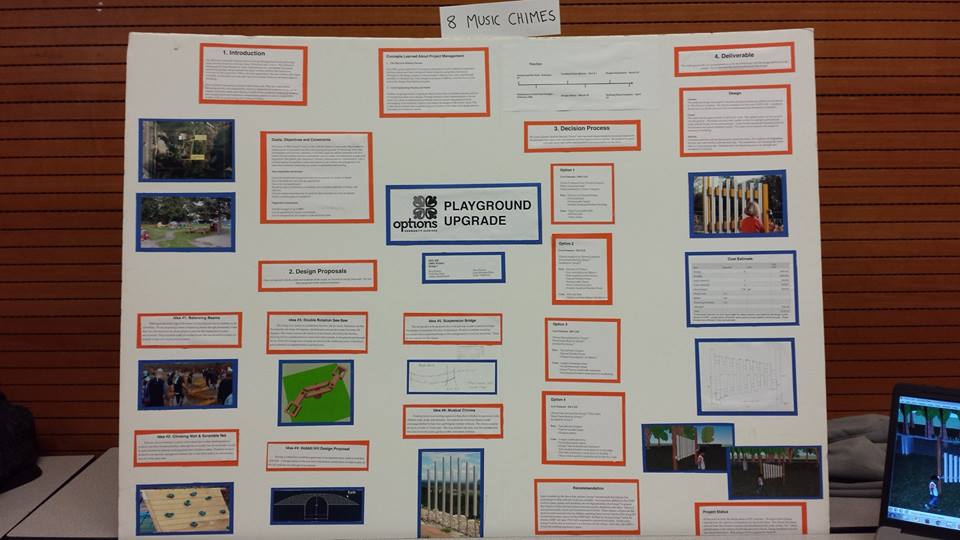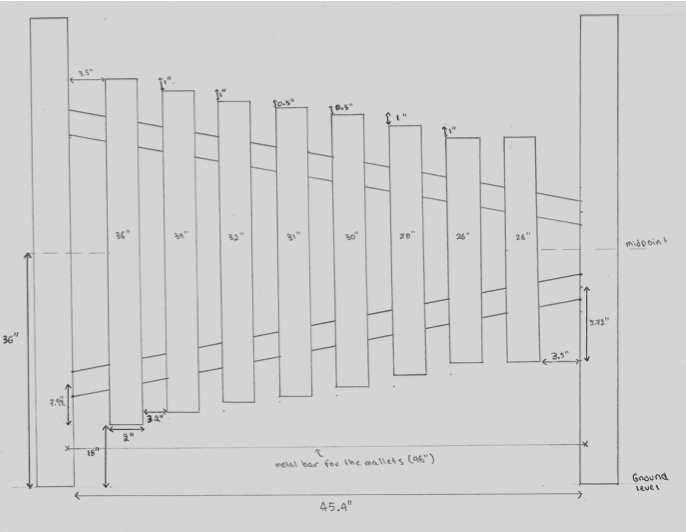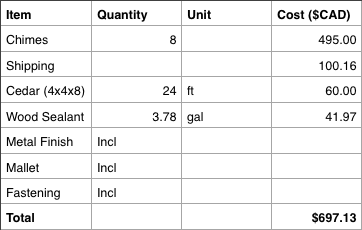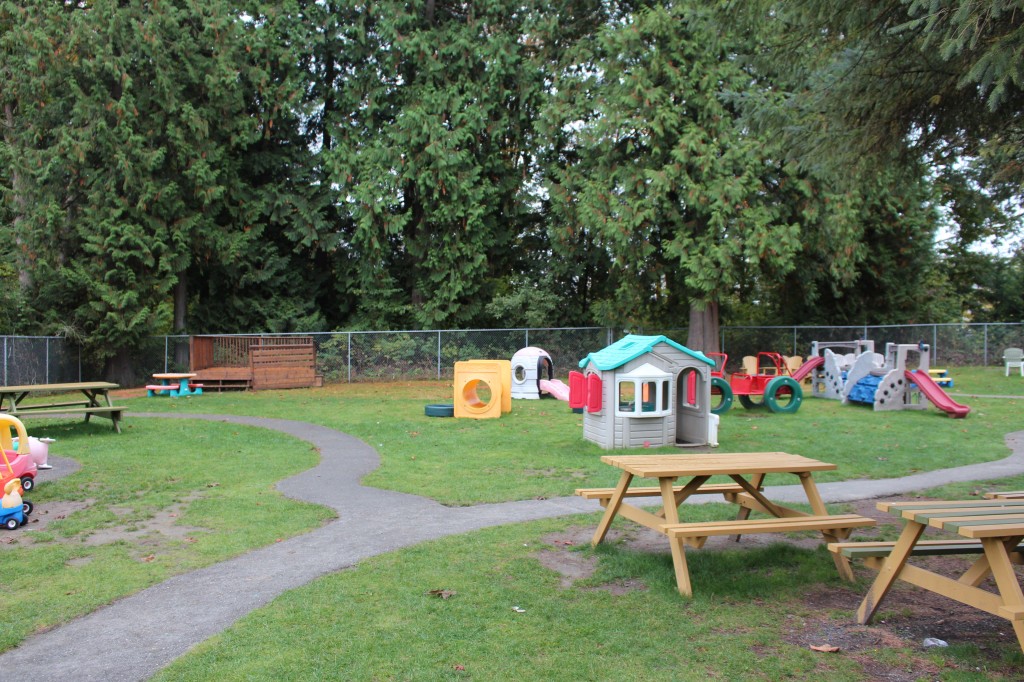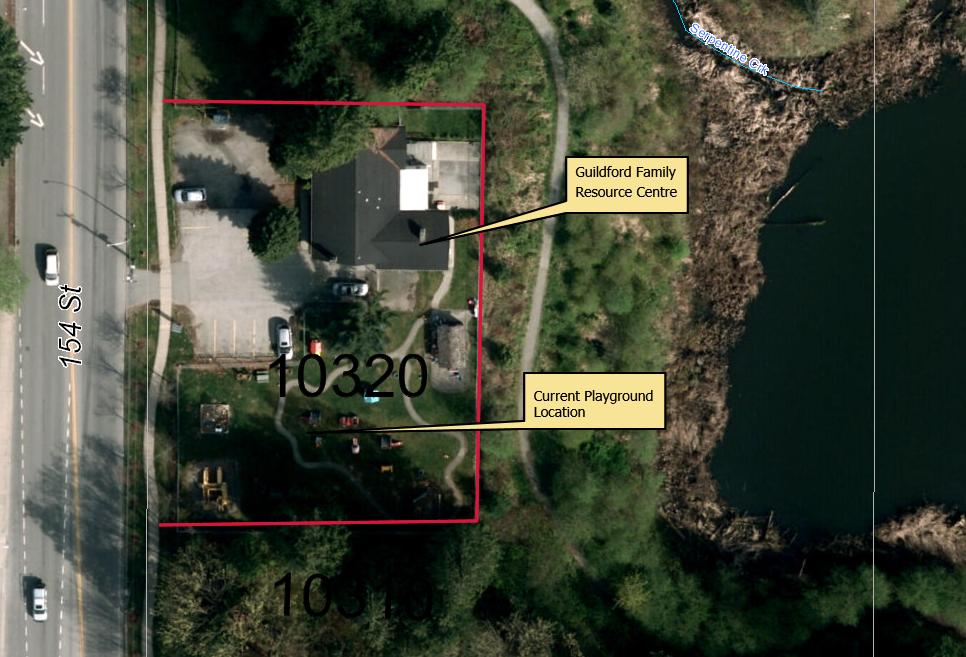Having established the expectations and desires of our client, our CBEL group did cursory research into many possible pieces of equipment that might be of interest. Of note, some suggestions were:
1. Balancing Beams
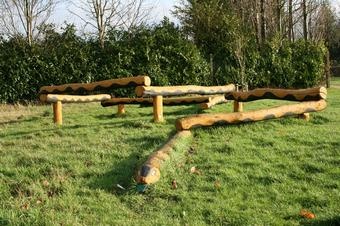
The balancing beams would long pieces of wood supported at multiple points along its length, with the intention of children to walk along them. They could be straight along its entire length, or change direction every several feet. The surface meant to be balanced on would be thin, and elevated slightly off of the ground, to encourage the development of balance without incorporating serious risk.
2. Climbing Wall & Scramble Net

This would be a wooden and rope structure where children could ascend either the gently sloped climbing surface or the rope mesh, and descend the other side. The height of the entire structure is easily adjustable, as are the amount of climbing holds and the tension in the mesh.
3.0 Musical Chimes
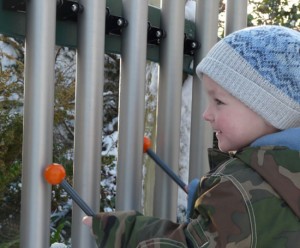
The chimes would be a set of 7 hollow metal bars of varying length that, when struck, each compose one note of the same octave. A rubber mallet would be included with the chimes, and secured to the frame holding the chimes via a short rope.
4.0 Suspension Bridge
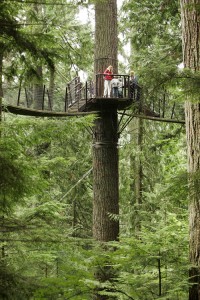
The suspension bridge would be composed of two wood and rope walkways that meet in the center at a tree-mounted platform. Tension in the walkways would be achieved through attachment to support posts at their ends.
In order to narrow down our choices, we first sent the ideas off to Katherine at Options and asked for her input. We were informed that she and her co-workers unanimously liked the idea of either the Musical Chimes or the Suspension Bridge. To choose between the two choices, as well as their multiple individual variations, our group looked at two factors: Time and Expertise. Through multiple group meetings it was decided that we would strive to present a completed piece of equipment. This ultimately led us to choose the Chimes over the Bridge for a couple of reasons.
Expertise: While several members of our group have experience with metal and wood-working, we weren’t confident we had the ability to safely construct a suspension bridge meant for children.
Time: The initial estimation of design and construction time for both objects had the suspension bridge rank as much more time costly.
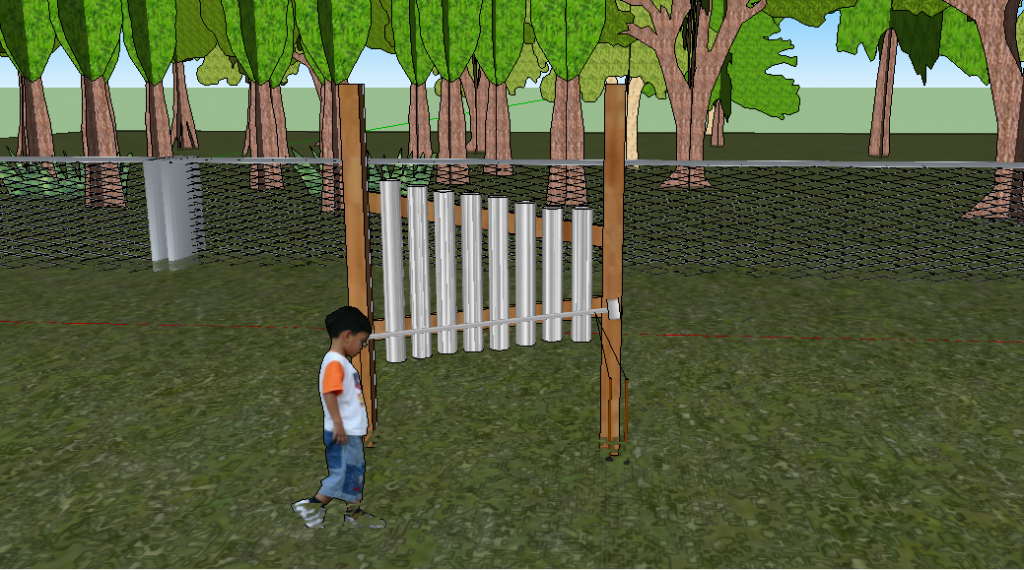
The Musical Chimes will be made of hollow tubed aluminum pipes, mounted to a wooden frame. Each individual tube plays a different note on a single octave, when struck by the rubber mallet. The mallet is attached to the frame by a rope that is connected to an aluminum guiding rod. The reasoning for this is that a longer rope may pose a hazard to the children who are up to six years old, but the mallet will still need to reach each of the chimes. By having the mallet on a short rope, but allowing the rope to have horizontal mobility, both issues are eliminated.
Initial Timeline
Contact and Site Visit – February 5th
Our group met with Options BC’s representative, Katherine MacIntyre, at their Guildford Site. We analyzed site layout and had a discussion regarding everyone’s expectations. Options desired a piece of playground equipment, the CBEL group desired experience working with a real-life client.
Submission of Individual Designs – February 20th
Each member of our group researched multiple additions that might be appropriate for the Guildford site. Cursory research was done into these suggestions in topics such as safety, ease of creation and how “natural” the piece felt. The best six suggestions were compiled in a proposal document and submitted to Katherine.
Feedback from Options – March 1
The Options BC staff revealed what they believed would be the most appropriate piece of equipment: The Musical Chimes or the Suspension Bridge. As well, further information was revealed about available budget.
Design Choice – March 10
Additional research and analysis was conducted in order to determine whether the Chimes or Bridge would be the most logical piece of equipment to create. Ultimately it was decided to work on the Chimes due to time, cost and expertise.
Design Finalization – March 20
The remaining research needed in order to be sure that the chimes were a feasible addition was completed by this date. Detailed sketches were completed of the frame and chimes, the material and construction costs were confirmed, and appropriate contacts were secured.
Building Phase – April Onwards
Our group, in an effort to maintain our original goal of physically providing the piece of equipment to Options BC rather than just a design, will be working past the end of the term to deliver their product. We believe that our commitment to their cause doesn’t end when the academic term does, and we will see the Musical Chimes project through until it’s completion.
